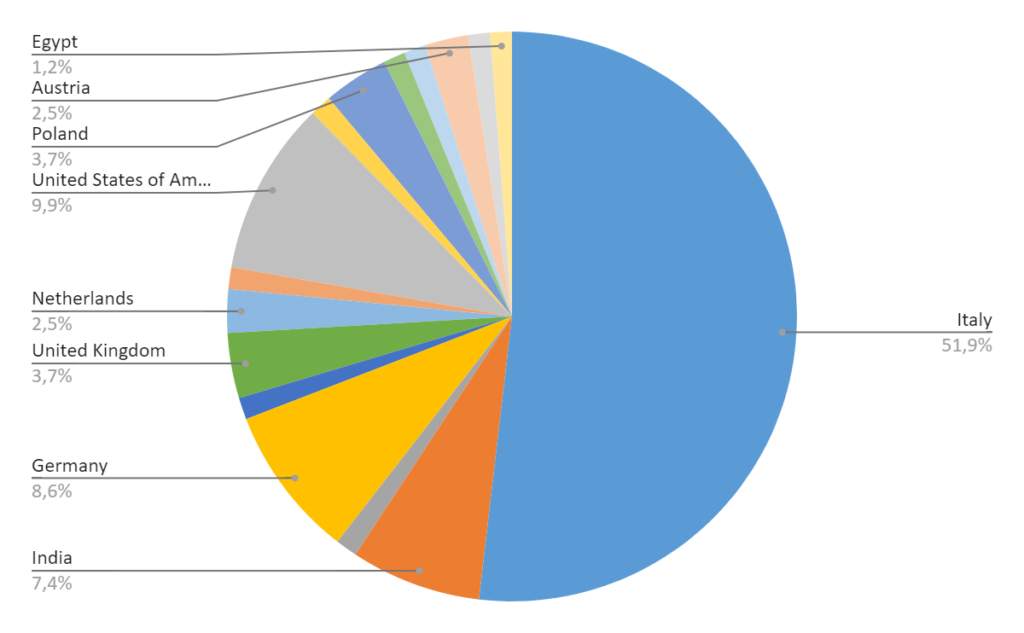CT4OPTO Report
Participants

The “Principles of light-induced charge transfer for optogenetics” workshop was attended by 81 participants. The total number of participants is 81, coming from 16 countries, as specified: Italy: 42; United States of America: 8; Germany: 7; India: 6; United Kingdom: 3; Poland: 3; Netherlands: 2; Austria: 2; Hungary: 1; Czech Republic: 1; Cameroon: 1; China: 1; Belgium: 1; France: 1; Israel: 1; Egypt: 1.
14 participants are invited speakers, 17 are contributing speakers, 3 are members of the CT4OPTO scientific committee, and 3 of the organizing committee. The event was organized by the Institute of Nanoscience of the National Research Council of Italy, the University of L’Aquila and the University of Southern California. The event was sponsored by Psi-k, received the patronage of Cecam-IT-Simul and was supported by Gruppo Alchimie.
General remarks
During the whole workshop all participants showed a very high level of interest and keen participation. Despite the online format, which does not facilitate the speakers-audience interaction, the discussion was always fruitful and lively, showing the high competence of the participants in the workshop topics. The invited speakers delivered very interesting and inspiring talks, but we were also impressed by the high quality of the contributed talks. Overall, the whole workshop was characterized by a fruitful exchange of ideas that will surely motivate new research on the topic.
The workshop was undoubtedly successful: the number of applicants exceeded our expectations, the invited speakers presented very well their excellent research work, the contributed speakers delivered well-prepared and interesting talks. We are sure that all the talks gave very interesting inputs to all the participants, but we also think that very interesting inputs from the audience came out as well. We noticed that research on these topics has reached impressive levels, both from an experimental and from a theoretical point of view. We also believe that some possible routes for further developments in the field emerged during the workshop.
Further details: